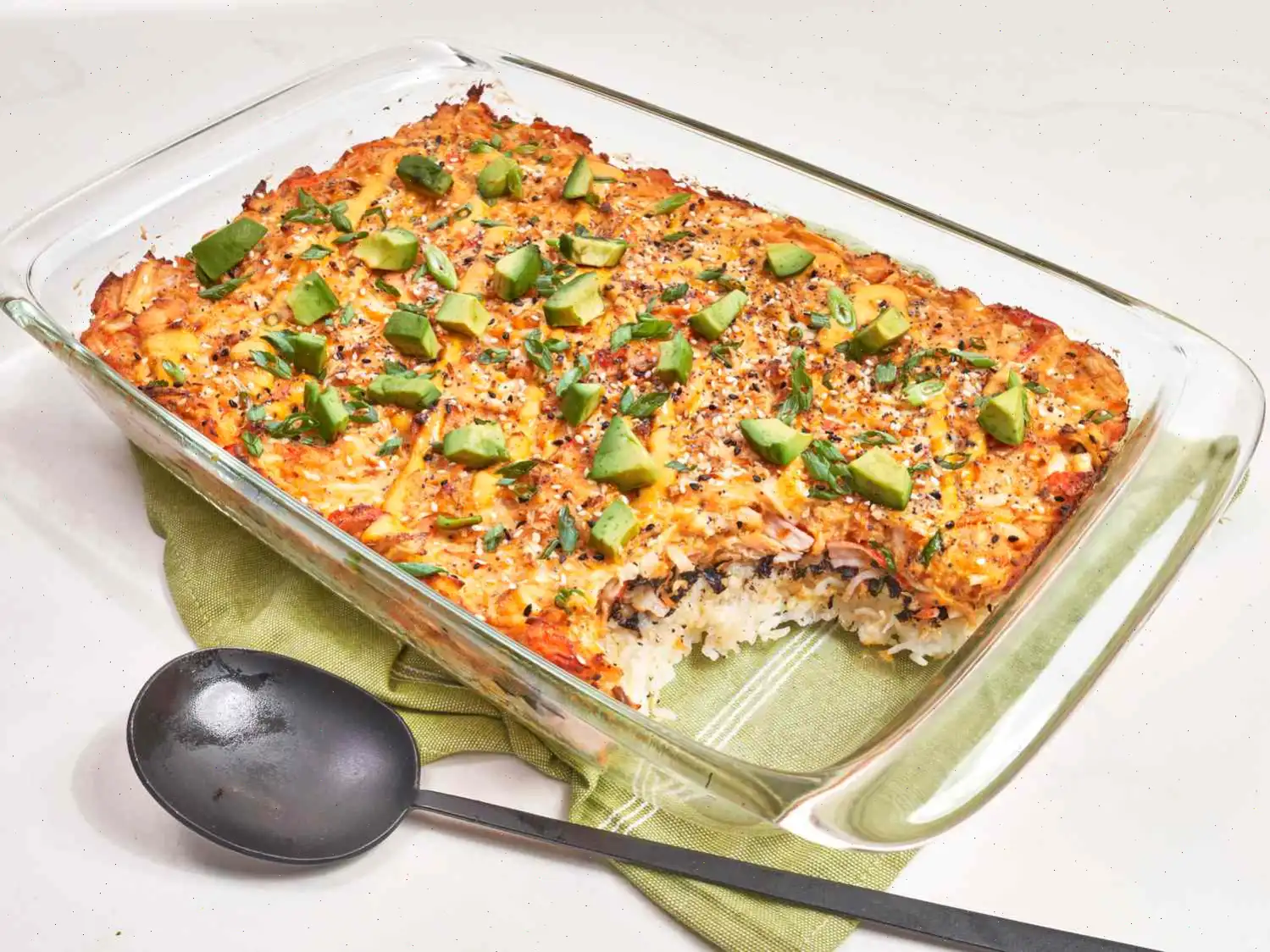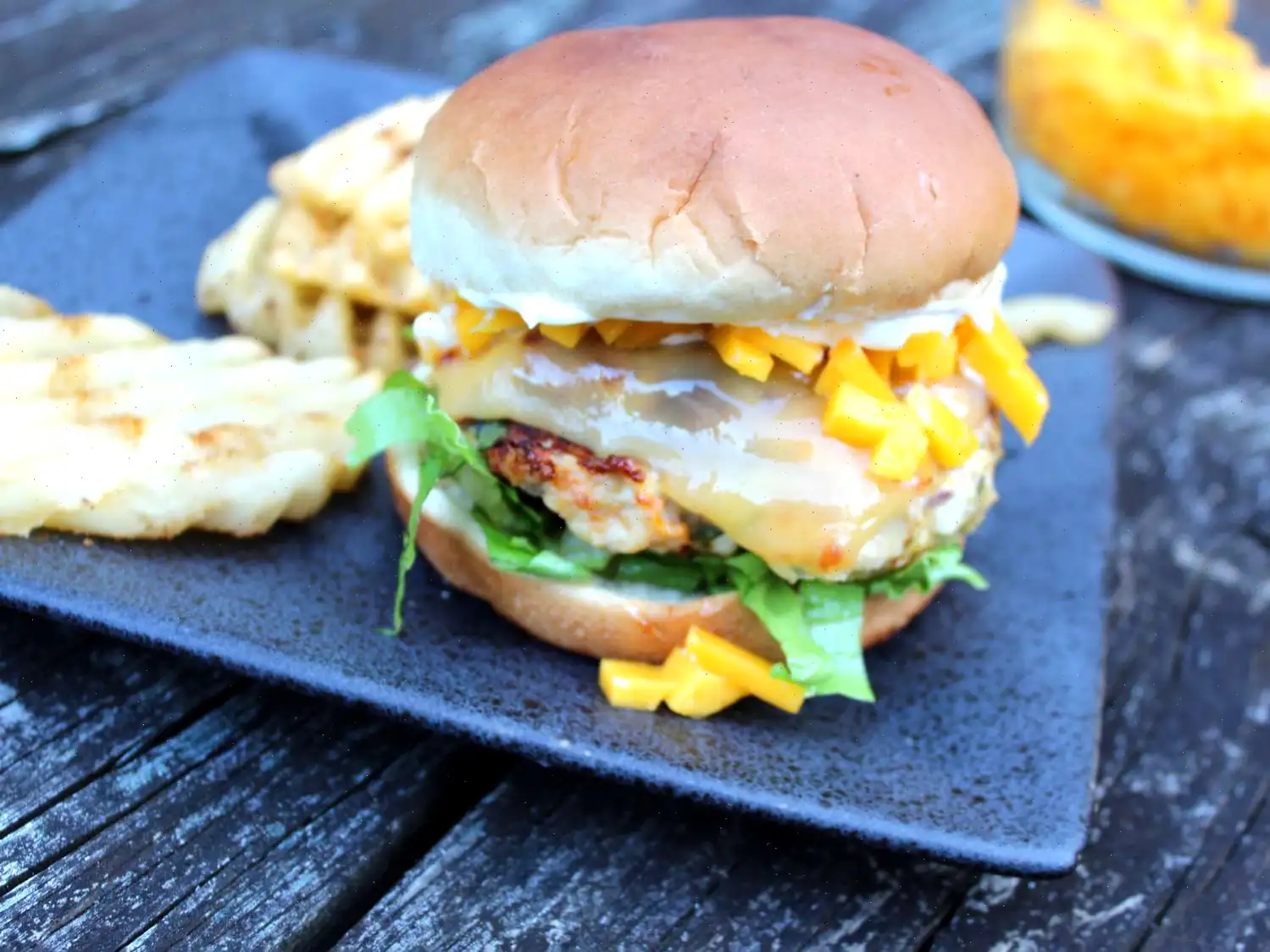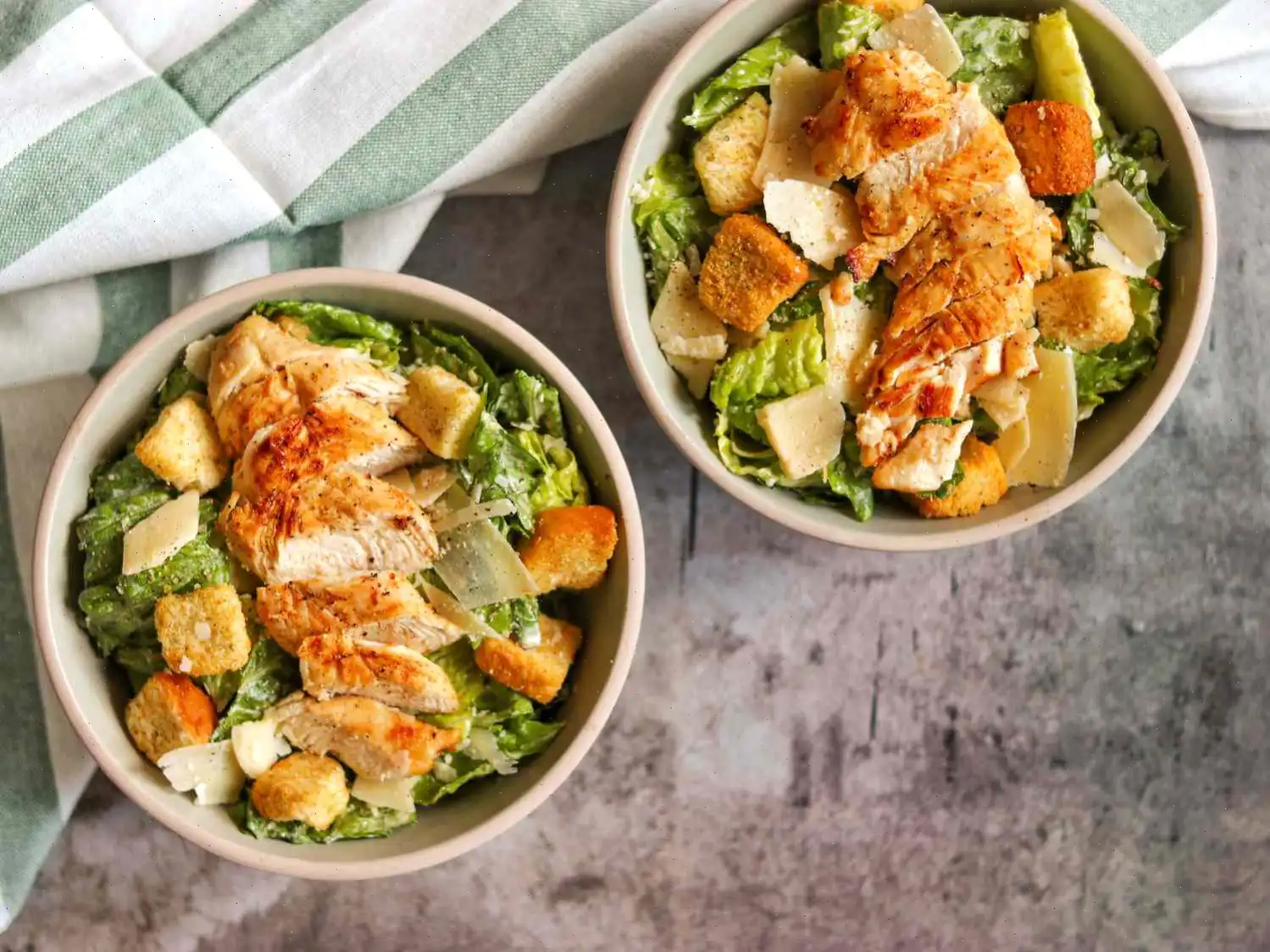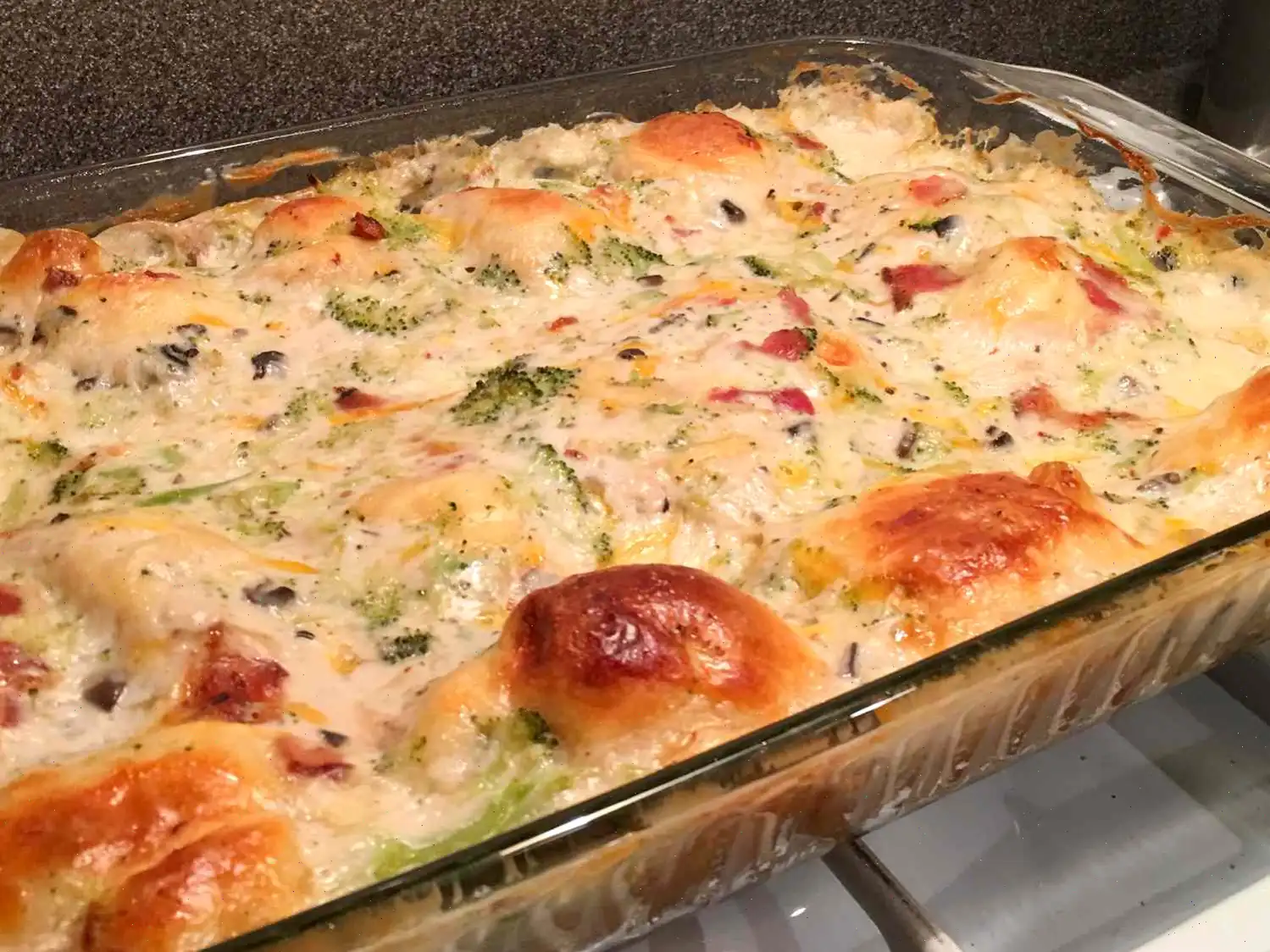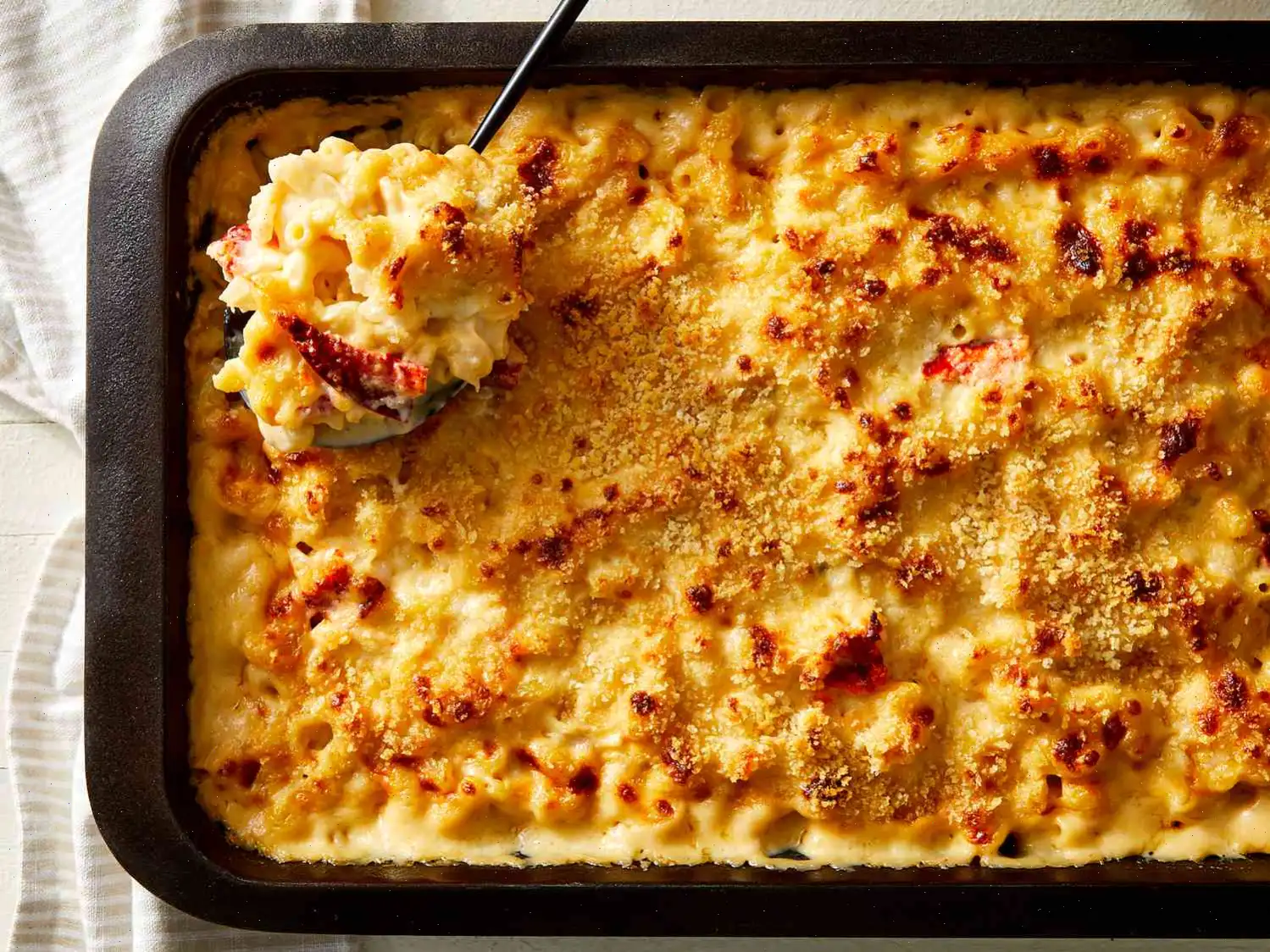
Salmon Sushi Bake Recipe
Ingredients
- 1 1/2 pounds salmon filet
- 1 1/2 teaspoons kosher salt, divided
- 1/4 teaspoon freshly ground black pepper
- 1/2 teaspoon lemon pepper
- 1/4 teaspoon garlic powder
- 1/4 teaspoon paprika
- 2 teaspoons olive oil
- 2 cups sushi rice, rinsed
- 2 3/4 cups water
- 2 teaspoons rice vinegar
- 8 ounces imitation crab, shredded and chopped
- 8 ounces cream cheese, softened
- 1 cup kewpie mayonnaise, divided
- 3 tablespoons Sriracha, plus more to taste, divided
- 2 teaspoons soy sauce
- 3 large sheets nori (roasted seaweed)
- 2 teaspoons furikake (optional)
- 2 teaspoons everything bagel seasoning
- 2 teaspoons lime juice
- 2 sliced green onions, or more to taste
- 1 avocado - peeled, pitted, and diced
Directions
Preheat the oven to 450F (230C). Line a baking sheet with parchment or foil.
Place the salmon on the prepared baking sheet and season it with 1/2 teaspoon of salt, black pepper, lemon pepper, garlic powder, and paprika. Drizzle olive oil over the salmon. Bake in the preheated oven for 10-12 minutes, or until the salmon flakes easily with a fork. Let the salmon cool slightly before breaking it up into small pieces. Reduce the oven temperature to 400F (200C).
In the meantime, combine sushi rice, water, and the remaining salt in a saucepan. Bring to a boil, stir once, reduce the heat to low, and cover. Cook for 12-14 minutes, or until the liquid is absorbed and the rice is tender. Remove from heat, fluff the rice with a fork, and stir in the rice vinegar. Allow the rice to cool.
Once the salmon has cooled, add it to a large bowl along with the shredded crab, softened cream cheese, 1/2 cup of mayonnaise, 1 1/2 tablespoons of Sriracha, and soy sauce. Stir everything together until well combined.
Lightly grease a 9x13-inch baking dish and add the cooled sushi rice, pressing it into an even layer. Crush the nori sheets and sprinkle them over the rice. Optionally, sprinkle furikake over the nori. Spread the salmon mixture over the seaweed and rice, and then evenly sprinkle with everything bagel seasoning.
Bake the casserole at 400F (200C) for about 25 minutes, or until the edges are browned and the top is slightly crispy.
While the casserole bakes, stir together the remaining 1/2 cup of mayonnaise, 1 1/2 tablespoons of Sriracha, and lime juice. Once the casserole is done, drizzle the sauce over the top. Garnish with sliced green onions and diced avocado before serving.
Nutrition Facts (per serving)
- Calories: 649
- Total Fat: 50g (64% Daily Value)
- Saturated Fat: 12g (62% Daily Value)
- Cholesterol: 99mg (33% Daily Value)
- Sodium: 1447mg (63% Daily Value)
- Total Carbohydrate: 25g (9% Daily Value)
- Dietary Fiber: 4g (14% Daily Value)
- Total Sugars: 6g
- Protein: 25g (51% Daily Value)
- Vitamin C: 12mg (13% Daily Value)
- Calcium: 66mg (5% Daily Value)
- Iron: 1mg (7% Daily Value)
- Potassium: 705mg (15% Daily Value)
* Percent Daily Values are based on a 2,000-calorie diet. Your daily values may be higher or lower depending on your calorie needs.
** Nutrient information is not available for all ingredients. Amounts are based on available nutrient data.
The Story Behind Salmon Sushi Bake
Salmon Sushi Bake is a modern twist on traditional Japanese sushi, blending the flavors of classic sushi with the convenience of a baked casserole. This dish originated in Hawaii, where sushi rolls and poke bowls are immensely popular, and home cooks sought a way to replicate sushi flavors without the delicate rolling process. It gained traction as a party or potluck favorite because it can feed many people while offering the rich taste of salmon combined with creamy sauces and seasoned rice.
Regional Variations and Influences
Although the dish is rooted in Japanese cuisine, its Hawaiian adaptation introduces elements like baked creamy layers and furikake seasoning, which are not typical in traditional sushi. In the United States, variations often include toppings like avocado, sriracha, and everything bagel seasoning, reflecting the fusion of Asian and Western culinary influences. In the Philippines, a similar baked sushi dish sometimes incorporates local seafood and sweet mayonnaise, showing regional creativity in adapting the concept to local tastes.
How It Differs from Similar Dishes
Unlike traditional sushi rolls, Salmon Sushi Bake is not rolled but layered in a casserole dish. The rice forms the base, followed by a baked mixture of salmon, cream cheese, and crab or imitation crab, creating a warm, creamy texture rather than the cold, firm structure of sushi rolls. Compared to a poke bowl, which is served raw and chilled, this dish offers a comforting baked option that highlights both the salmons flavor and a savory, slightly caramelized topping.
Where Its Commonly Served
This dish is popular at casual gatherings, potlucks, and family dinners due to its ease of preparation and crowd-pleasing flavor. Hawaiian restaurants and sushi-themed cafes sometimes offer it as a specialty item, often served with sides like pickled ginger or spicy mayo. Its baked nature also makes it convenient for catering events, as it can be prepared ahead of time and served warm without losing texture.
Fun and Interesting Facts
- The dish has become a viral sensation on social media, particularly on platforms like TikTok, where creative variations with different toppings are showcased.
- Using cream cheese in the bake is a distinctly Western addition, as traditional Japanese sushi does not include cheese.
- Furikake, a Japanese rice seasoning, enhances the umami flavor and adds a visually appealing texture to the top of the bake.
- Salmon Sushi Bake can be customized with a variety of toppings, from avocado to tobiko (fish roe), allowing home cooks to experiment with colors, textures, and heat levels.
- Because it can be assembled ahead of time and baked when needed, its an ideal dish for holidays and celebrations where multiple dishes must be served simultaneously.
You can listen to this recipe in AI audio format. Simply click the play button below to listen to the content in a format that suits you best. It’s a great way to absorb information on the go!
FAQ about Salmon Sushi Bake Recipe
Comments
Steven Garcia
12/30/2024 08:30:52 AM
Sprinkled furikake on top of the casserole too. It was a hit with everyone!
Sandra Robinson
09/20/2023 08:15:31 PM
Wonderful recipe! Simple to follow and my family absolutely adored it!


